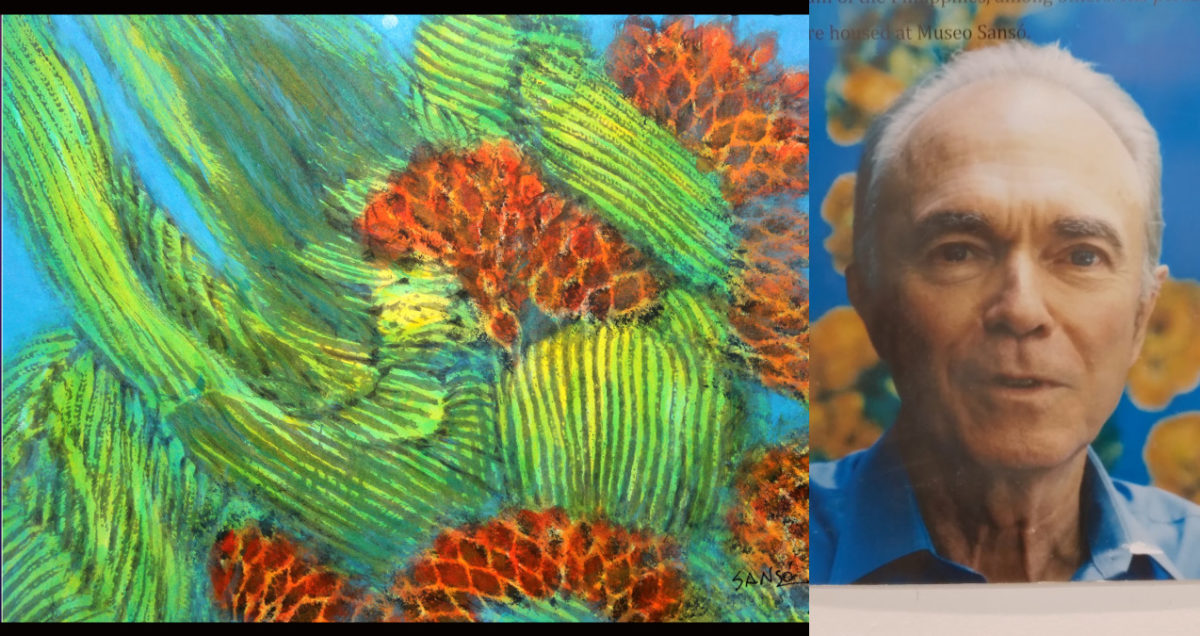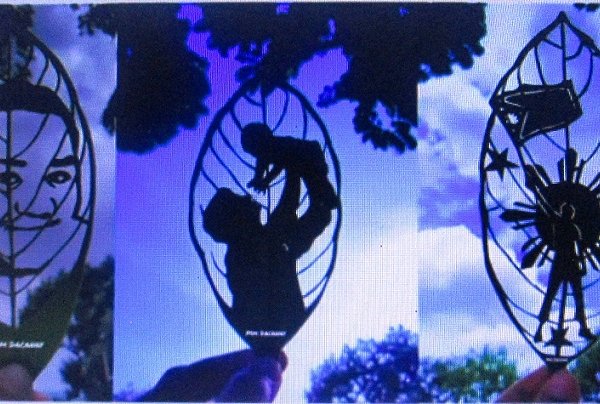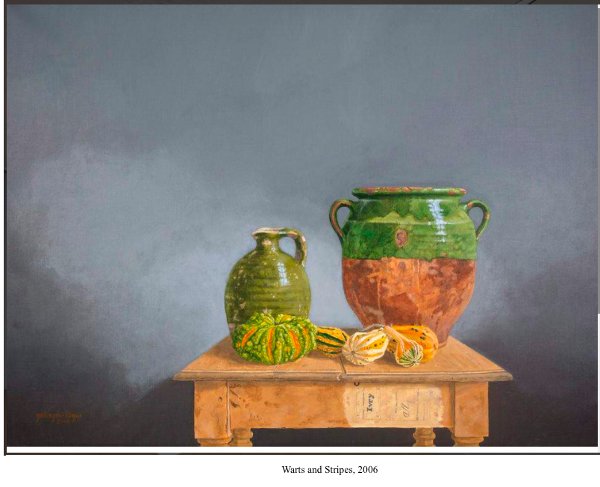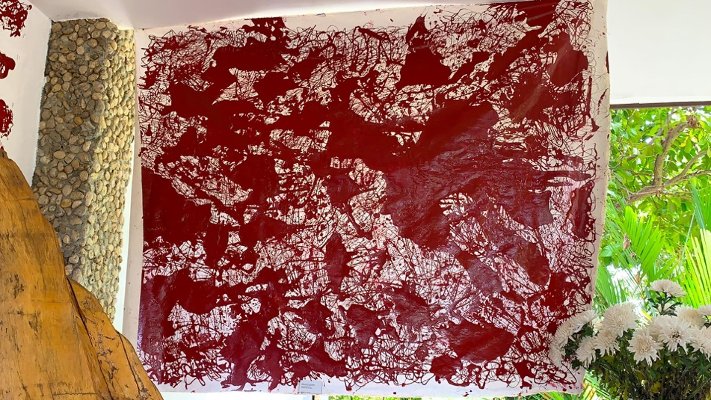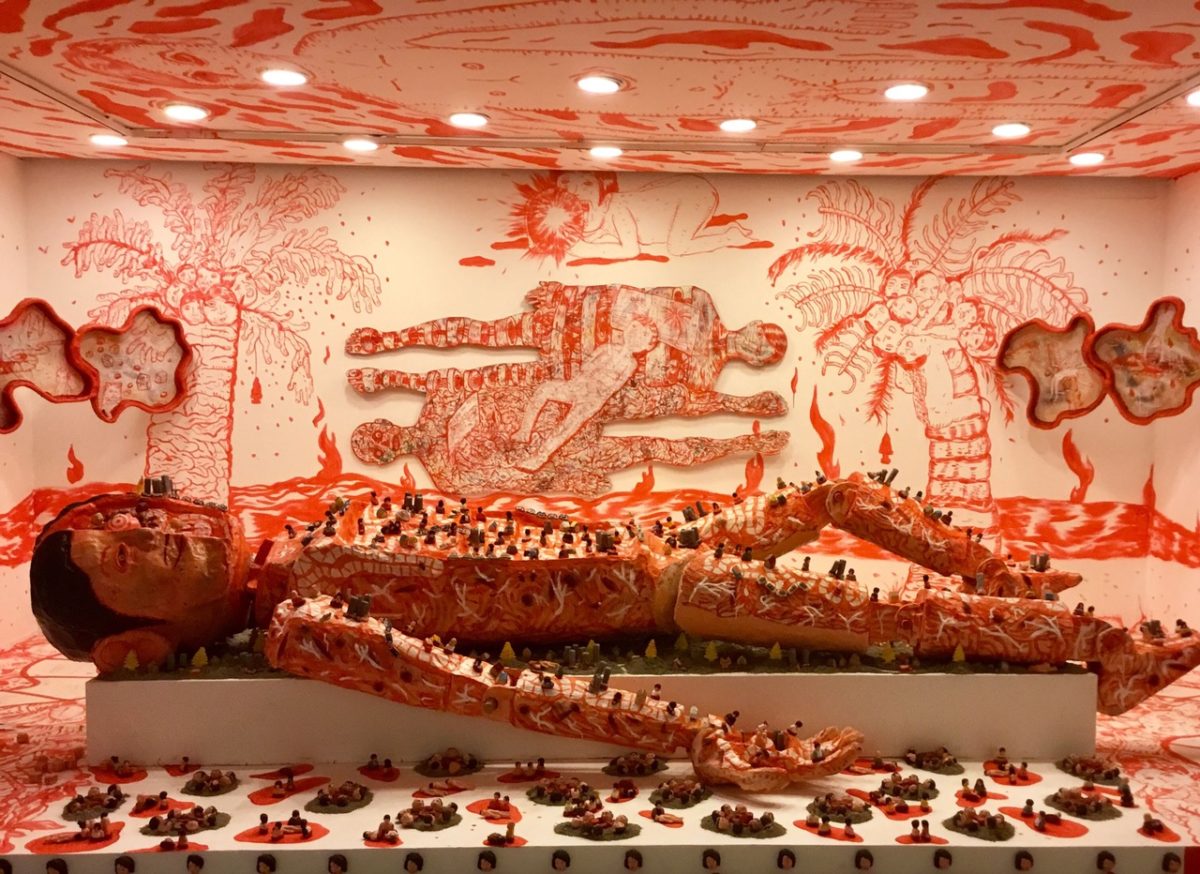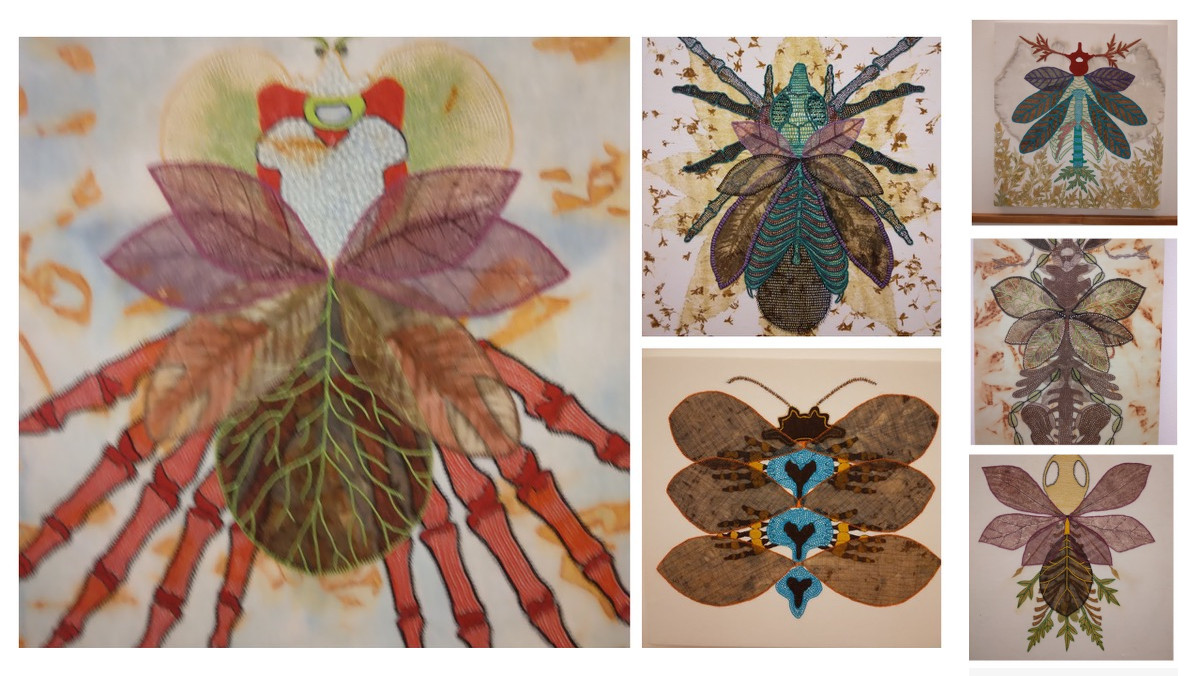Images courtesy of Art Lounge Manila and R.C. Ladrido
Celebrating the 94th birthday of Juvenal Sansó, Art Lounge Manila presents Sansó: With Overflowing Abundance until December 4, 2023. On display are 34 acrylic works of floral still-lifes done over two decades between the 1980s and the early 2000s.
The essence of flora
The flowers exude a sensual palette of reds, greens, blues, and yellows— evocative of his childhood in the Philippines, full of lush plants under a tropical sky.
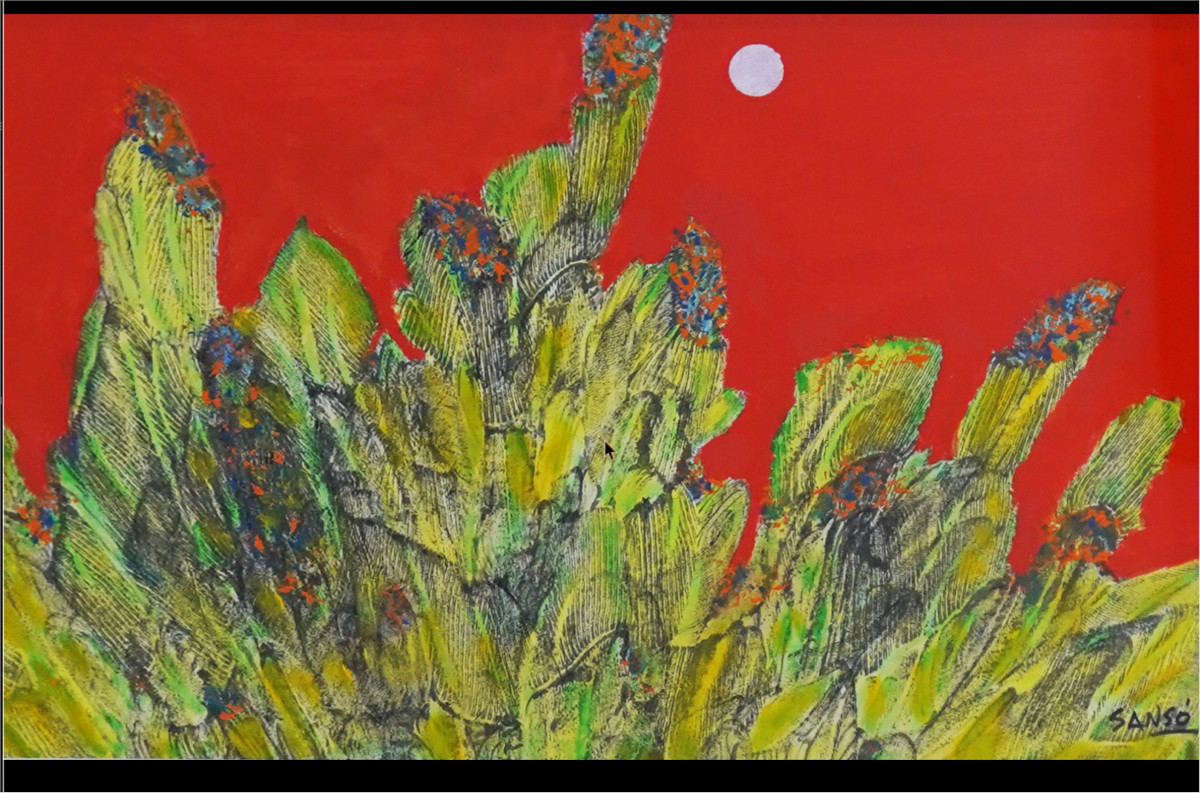
Solar bursts of bold orange, serene blue, or radiant yellow mostly serve as the background for the floral still-lifes. A white moon hangs over the flowers.
With a reddish orange background, blue flowers peep on top of dense green leaves. (Alluringly Loyal); with a skyblue background, reddish orange flowers strike a pose with their yellowish and green hues of leaves and stalks. (Striking Magnetism)
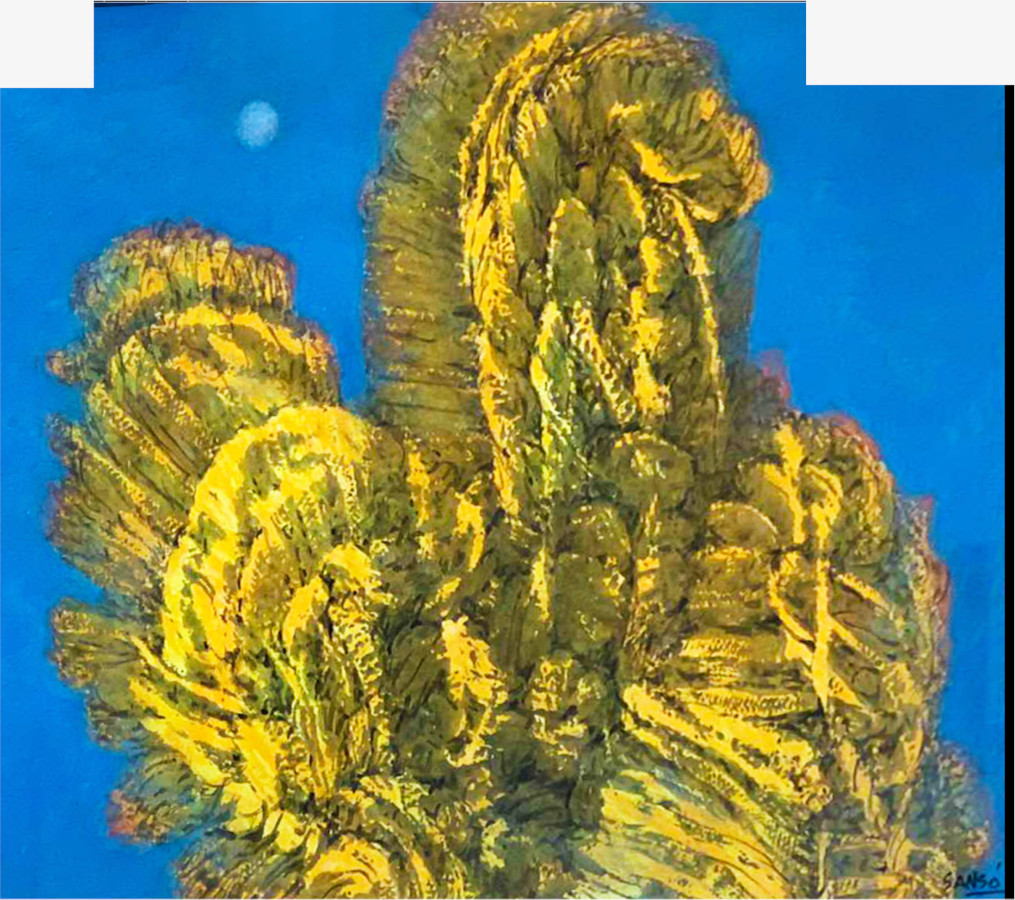
Densely textured, the dark green leaves of flowers are lined with black stripes with splashes of yellow. (Festive Mazurka, With Abundance and Mirth, and Sombre Elegance).
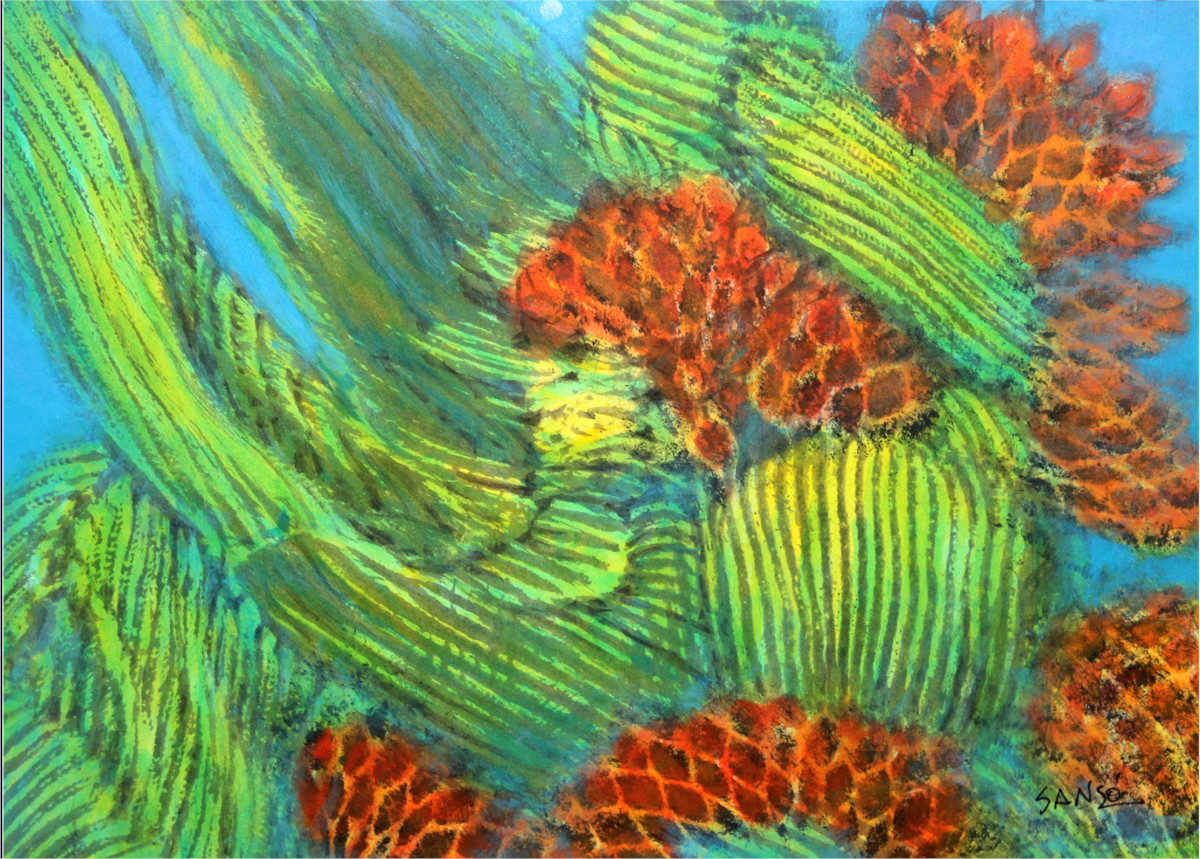
Unlike conventional flowers glorious in full bloom, Sanso’s floral forms have a surrealistic overlay: shades of brooding and enigma, almost like struggling for survival in an arid environment.
Face-to-face with these floral works demand thoughtful contemplation. A flower’s life span is so transitory and fleeting and yet, one cannot imagine a world without flowers, alive or painted by an artist for posterity.
The artist
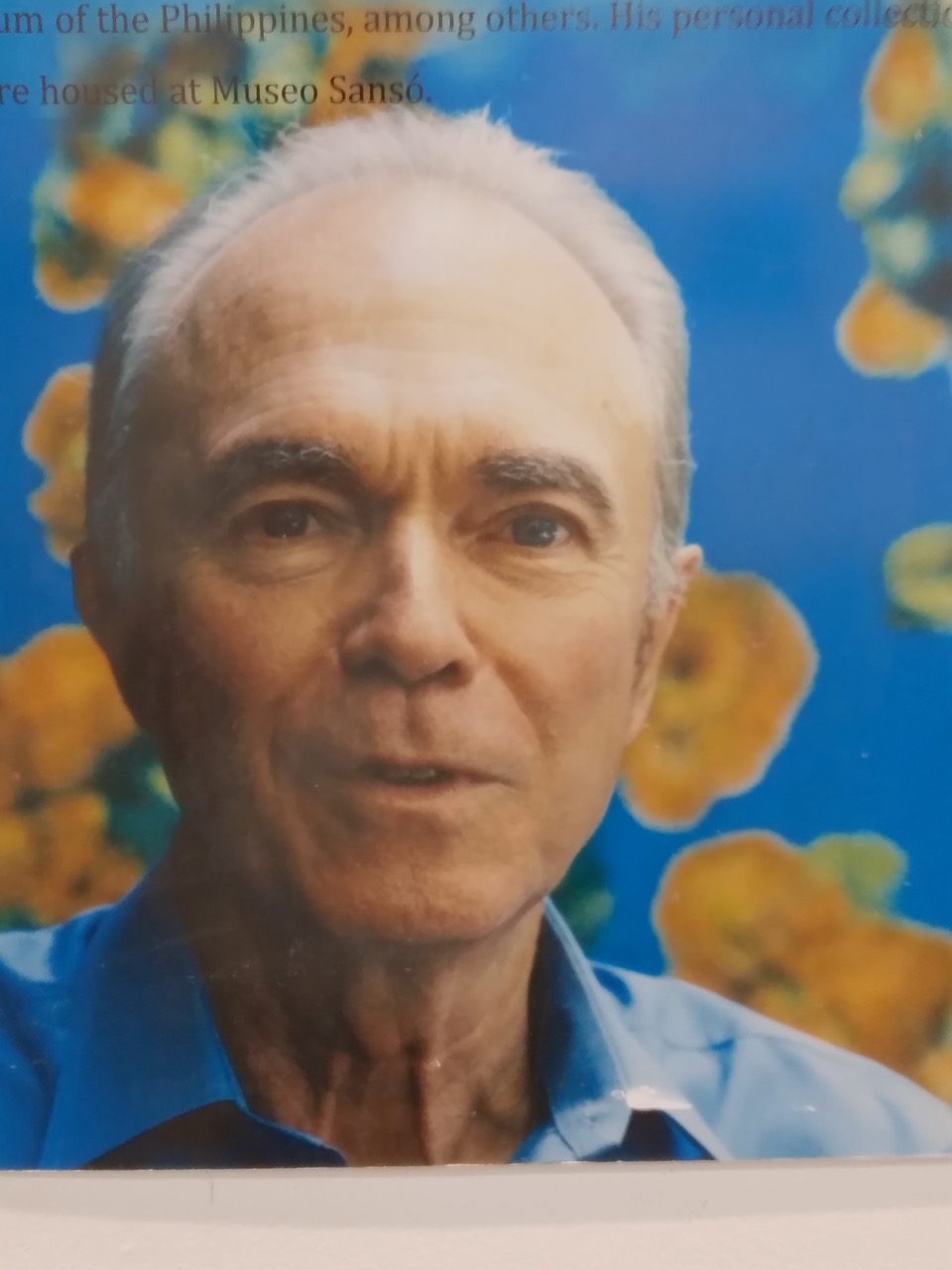
Juvenal Sansó (b. 1929): Born in Reus, Catalonia, his family moved to Manila in 1934 to avoid the turbulence of the civil war in Spain and the rise of fascism under Francisco Franco and established El Arte Español, a wrought iron business. Speaking Tagalog fluently and homeschooled, Sansó spent a happy boyhood in Paco, with memories of swimming in the Pasig River and family trips to Montalban, Rizal.
Dark years of war
The Japanese occupation of wartime Manila proved traumatic to the young Sansó; their house caught fire and his father lost his business as he refused to cooperate with the Japanese. His father then built horse-drawn buggies with car tires as wheels; when Liberation came, their home-made bus plied the Santa Ana to Quiapo route with Juvenal serving as conductor.
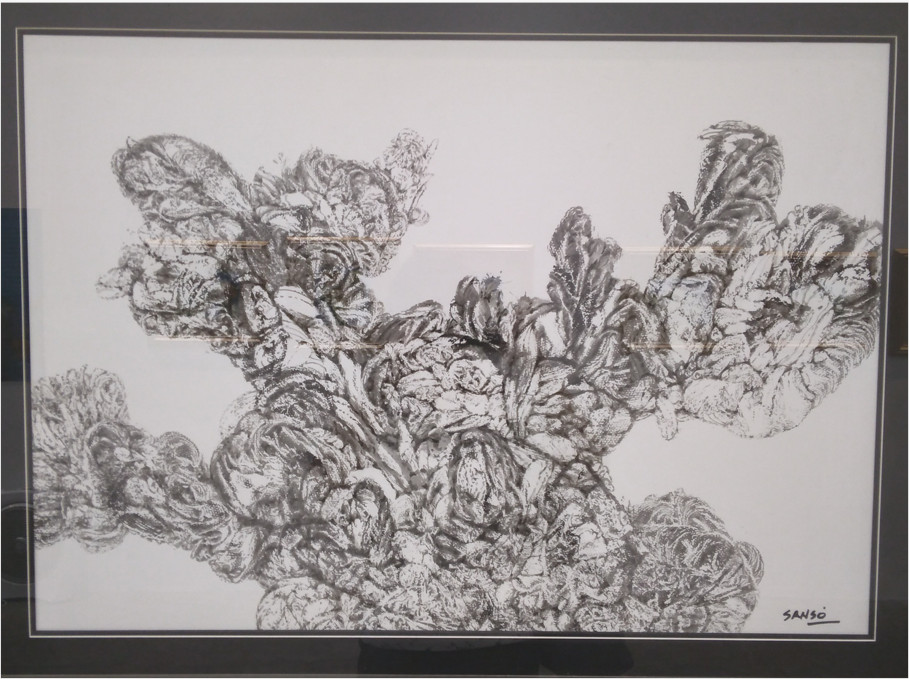
During the war, Sansó witnessed bombings, killings, death, and destruction. He was tortured by the Japanese and lost hearing in one ear that affected his sense of balance throughout his life. As an artist, this period of pain and trauma was expressed in his Black Period in the 1950s and 1960s where Sansó painted only in black and white, with grotesque bouquets of heads and faces, and gruesome imagery of death and destruction.
He enrolled as a special student in fine arts at the University of the Philippines in the late 1940s and later, attended special classes at the University of Santo Tomas. In UP, he studied under Fernando Amorsolo, Dominador Castañeda, and Ireneo Miranda. He won first prize in the watercolor category (Incubus,1950) competition of the Art Association of the Philippines (AAP) followed by another first prize in the oil category (Sorcerer, 1951) of AAP. During his UP years, his classmates and friends included Hugo Yonzon, Mauro Malang Santos, Larry Alcala (his best friend), to name a few.
He did further studies at the Academia di belle Arti in Rome and enrolled at the L’Ecole Nationale Superieure des Beux-Arts in Paris where he has lived for five decades. In 2008, he decided to come home to his beloved Manila.
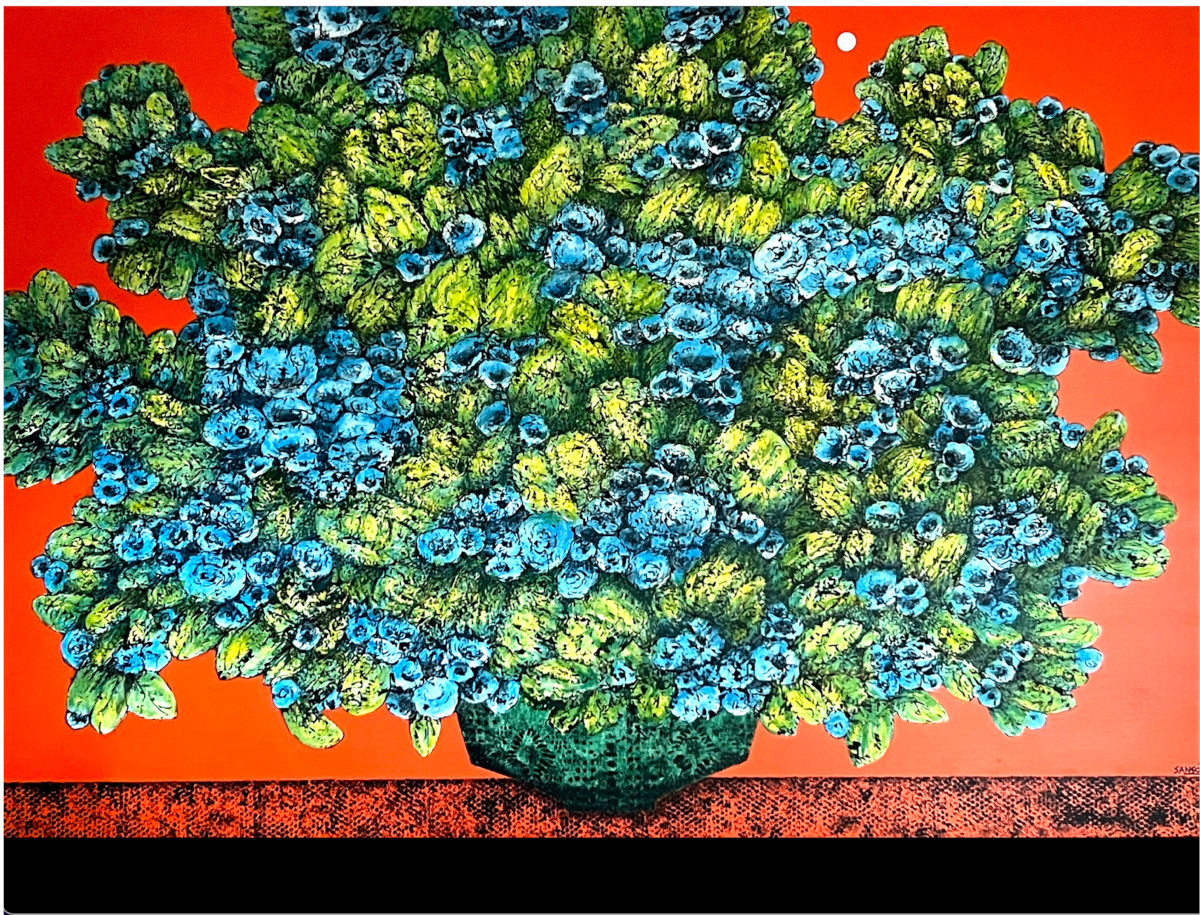
He had his first solo exhibit in Paris and in 1957, he held his first solo show in Manila at the Philippine Art Gallery, an exhibition of copper plate etchings, the first ever exhibition of a Philippine artist consisting of all fine prints. In 1964, his work titled Moonglow received the Print of the Year award by the Cleveland Museum of Art. Previous winners of the said award included Henri Matisse and Salvador Dali.
Fundacion Sansó
In 2015, Fundacion Sansó or Museo Sansó in San Juan was established. Among its noteworthy undertakings is the grant of financial aid for the research and production of thesis projects of students at the UP College of Fine Arts. It is the artist’s way of paying it forward to his alma mater.
Home in three countries
Three countries that Sansó have regarded as home have honored him. In 2006, he was awarded the Presidential Medal of Merit, the most prestigious award from the Philippine Government; in 2007, he received Spain’s Distinguished King’s Cross of Isabela, in recognition of his exemplary work across national boundaries. In 2008, France’s Ministry Culture and Communication conferred Sansó the Chevalier de l’ Ordre des Arts et des Lettres.
